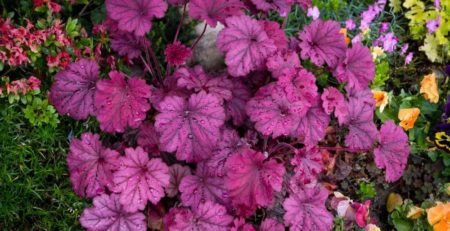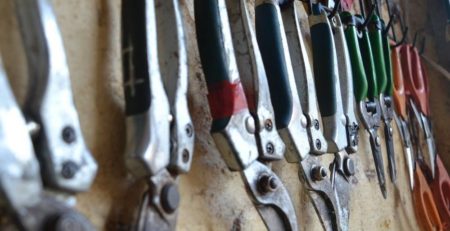Propagation of Native Milkweed
Background:
This discussion has come about because of the tropical milkweed (Asclepias curassavica) that has become abundant here. It is sold by many of the garden stores and aggressively multiplies. Findings show tropical milkweed may be detrimental to the Monarch Butterflies (Danaus plexippus) that migrate through our state to winter in Mexico.
In 2022, the migratory monarch butterfly was classified as “Endangered” by the International Union for Conservation of Nature (IUCN). Current research has scientists doubting tropical milkweed’s value to monarch preservation.
The OE parasite, (Ophryocystis elektroscirrha) a microscopic organism, has been identified in all monarch populations. Infected adult Monarchs scatter the spores on milkweed leaves and monarch eggs while breeding and egg laying. The caterpillars ingest the spores while feeding and become hosts allowing the parasite to replicate. Research has emerged showing an increase in monarch disease caused by OE linking it to tropical milkweed grown in the southern states.1
Studies suggest that OE infection reduces monarch survival2, reproductive success2, and flight ability3. It is suggested that it is the reason for the deaths of millions of migratory monarchs annually.4
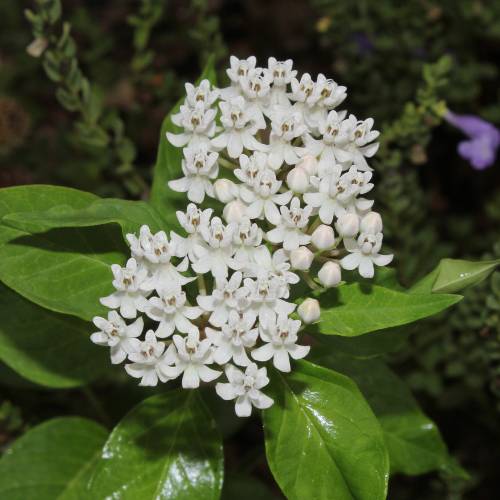
Native Milkweed
Monarchs lay their eggs in spring as they migrate north through Texas. Milkweeds are essential because they are the sole host plant for the monarch larvae. Unlike tropical milkweed, native milkweed seeds must undergo a period of cold before they begin to grow. Artificial cold stratification can help to break the seeds’ natural dormancy cycle. The information on growing Milkweed from seed comes from Carol Clark5, a Texas Master Naturalist and Conservation Specialist with monarchwatch.org. She shared the steps she has used successfully:
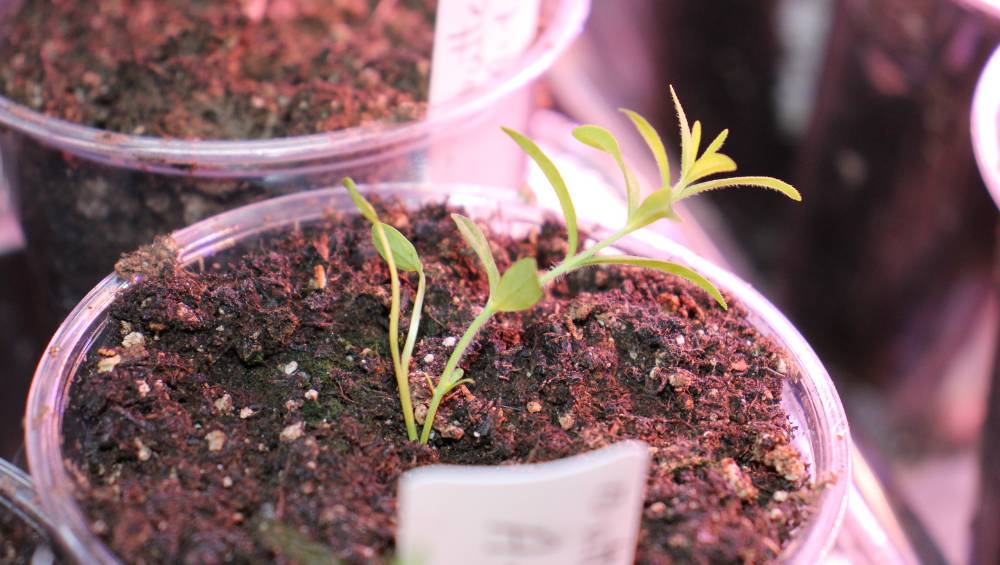

- Soak the seeds in water overnight.
- Thoroughly moisten sterile vermiculite with water and mix in the soaked seeds. Seal in a tightly closed container or Ziploc bag with the date printed on it.
- Refrigerate for 30 days or more. Just put it in the back of the fridge and make a note to remind yourself when the month is up.
- After 30 days, remove from the refrigerator, open the container and place in a warm spot in bright light (not direct sunlight which will damage the seeds) The growing medium must be kept moist. A light watering, once a day, should be sufficient.
- The seeds should begin to sprout in about a week.
- Once sprouted, the sprouts need to be bumped up into their own container.
- It’s important to use soil with mycorrhizal fungi such as ProMix BX or Happy Frog. You can also add Orca or Dr. Earth products to the soil.
- The containers need to be taller rather than wider. These are taproot species and don’t do well in regular shorter pots. (Think 20 oz Big Gulp drink cup) You can get clear plastic 20 oz cups in bulk from Amazon. Take a small tool and drill holes into the bottom of each cup for drainage.
- If you have never bumped up seeds, be sure that the soil medium has been broken up and thoroughly wetted. Do not breathe in the soil mix. Other things to remember – use disposable rubber gloves, hold the sprout by the leaf not the stem. Grasp it in one hand, make an indentation in the soil with your other hand. Insert the sprout into the indent and firm the soil around it. Do not let the sprouts dry out. Handle them quickly.
- Arrange the seedlings in their pots on shallow trays on a heat mat under a grow Water only from below. They are very susceptible to damping off if watered from above.
- In about 4 months the root system of the sprouts will be large enough to plant them outside.
- Carol Clark also discovered that occasionally the plants held in pots will spontaneously go dormant. Do not assume they have died because it is a normal process for all native milkweeds.
- Plant in Spring or Fall. If you see caterpillars decimating your new milkweeds, you may want to protect them for a year by using a wire or mesh enclosure.
- Protect also from rats, mice, and rabbits.
- Never use pesticides. No matter the intended target, pesticides severely impact pollinators like the monarch butterfly.
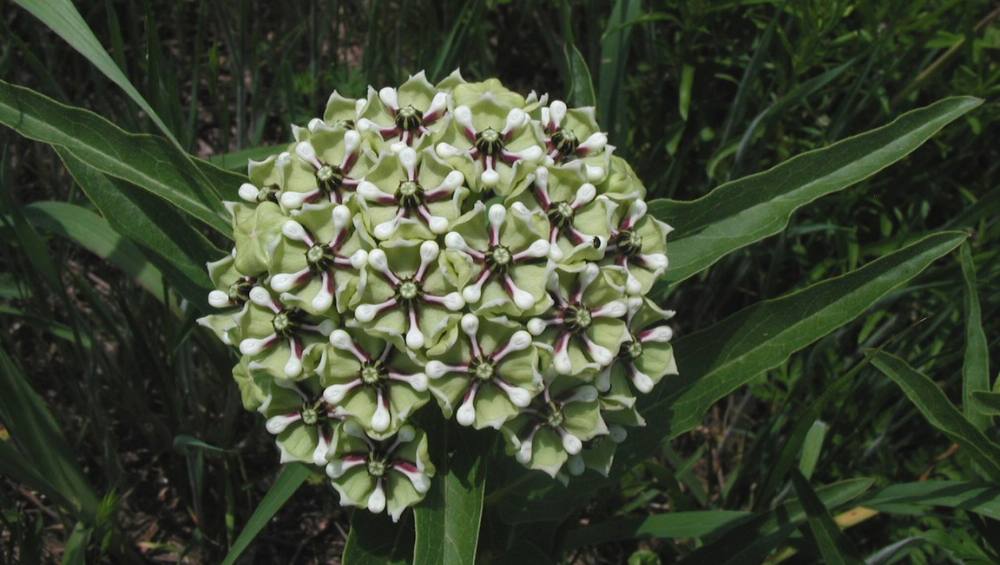
Once you have established Milkweed in your garden, it should come up again the next season and you won’t have to go through this each year. You can collect the seeds from the ripe pods (pods that readily split open when touched). The seeds that have flown away on the wind will sprout in another year; after they have been cold stratified.
Good Luck. It is somewhat difficult to start milkweed from seed, so the more you know, the better. I hope this gives you a start.
References:
1 OE and Tropical Milkweed
2Parasites hinder monarch butterfly flight: implications for disease spread in migratory hosts
3 Effects of the protozoan parasite ophryocystis elektroscirrha on the fitness of monarch butterflies (Danaus plexippus)
4 Parasite dynamics in North American monarchs predicted by host density and seasonal migratory culling
5 Carol Clark, Conservation Specialist
Additional Resources:
Information on the species that are native to the different regions: http://www.bonap.net/NAPA/TaxonMaps/Genus/County/Asclepias
A few of our native milkweeds
Article posted by the Native Plant Society of Texas on March 21, 2012 by William Hopkins
Bring Back The Monarchs (monarchwatch.org)
Milkweed Regions & Seed Needs | Bring Back The Monarchs (monarchwatch.org)
Milkweed (monarchwatch.org)
https://xerces.org/blog/tropical-milkweed-a-no-grow
Native Plant Society of Texas
Lady Bird Johnson Wildflower Center Plant Database
Identification of Milkweed in Texas by Texas Parks & Wildlife
Where you can get Native Milkweed Seeds:
- https://www.americanmeadows.com/wildflower-seeds/milkweed-seeds
- https://www.livemonarch.com/extra Low-cost, high-quality seed for all and for some in need *Free* seeds, just cover postage and promise to share with others.
- https://www.rareseeds.com/catalogsearch/result/?q=native+milkweed+plants
- https://gardenforwildlife.com/collections/milkweed for monarchs
- https://www.edenbrothers.com/
- https://whitwamorganics.com/products/milkweed-butterfly-weed?variant=8312665014317
- https://www.fruitionseeds.com/shop/featured/flowers/milkweed/organic-milkweed/
- https://www.seedsource.com/catalog/






